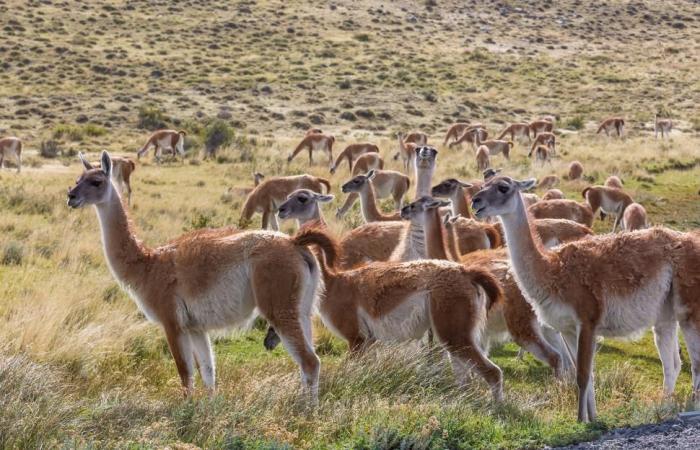A proposal from Conicet NOA Sur was approved by an international committee.
Thanks to the contributions of the Conicet NOA Sur researcher Ramiro Ovejero Aguilar and a scientific team from Latin America, the guanaco (Lama guanicoe) was included in a list of protected migratory species in the region during the Convention on the Conservation of Migratory Species of Wild Animals (CMS) that was held this year.
This achievement is the result of the collaboration of the specialist with colleagues from Peru, Bolivia, Paraguay and Chile, who, using studies and research on the current situation of this herbivore – the largest in the Southern Cone – presented a series of arguments to the committee for the evaluation of the case.
The balance highlights the following situation: as occurs with other migratory species, the population of this camelid in the region decreased considerably.
“Over the last two centuries, the number of individuals has dramatically decreased, from 30 to 10 million to approximately 2.5 million today,” said Ovejero Aguilar, from the Institute of Regional Ecology.
In addition, the original distribution area, which is mainly the Andes Mountains, has decreased by 40%. This is due to the impact of different factors. And, although in Argentina it is still considered a minor concern, we have small, highly fragmented and isolated guanaco populations.
These were some of the evidences that prompted the decision to promote cooperation between countries in the region to ensure the survival of the guanaco; a recognition that, in Ovejero Aguilar’s view, constitutes a historic decision and at the same time “fundamental to encourage governments to implement, improve and coordinate management and preservation plans in those countries where this and other migratory species are present.”
Biodiversity
The list designed by the CMS underlines the vital role played by migratory species in maintaining and preserving biodiversity worldwide. Ovejero Aguilar defines migration as a “pattern of behaviour in which a group of individuals from a population move spatially along an altitudinal or longitudinal gradient, from one habitat to another; in a predictable manner and involving a return to the place of departure”.
Just like the guanaco, billions of animals make relocation trips every year by land, sea and air, crossing national borders and continents; some even travel thousands of kilometers to feed and reproduce. They also play an essential role in stabilizing the planet’s ecosystems, because they provide benefits for plant pollination, the transport of key nutrients, pest predation and carbon storage.
With the image of a guanaco, the 20 pesos bill is already in circulation
“The survival of the guanaco may be more compromised if its seasonal movements are limited due to overgrazing; due to the presence of physical barriers, such as fences and routes, or other anthropogenic changes, such as clearings, or due to habitat fragmentation due to the installation of new infrastructure; and the scarcity of water and food as a consequence of climate change,” concluded Ovejero Aguilar.


